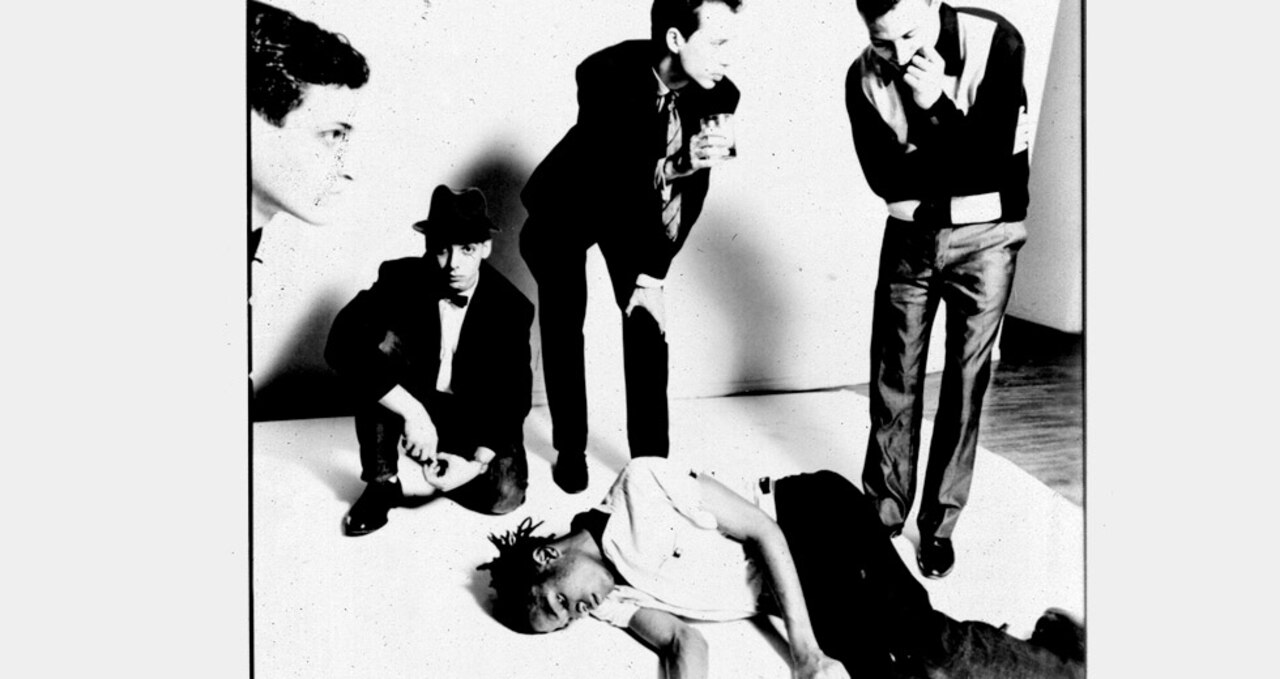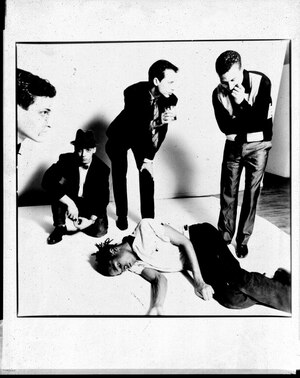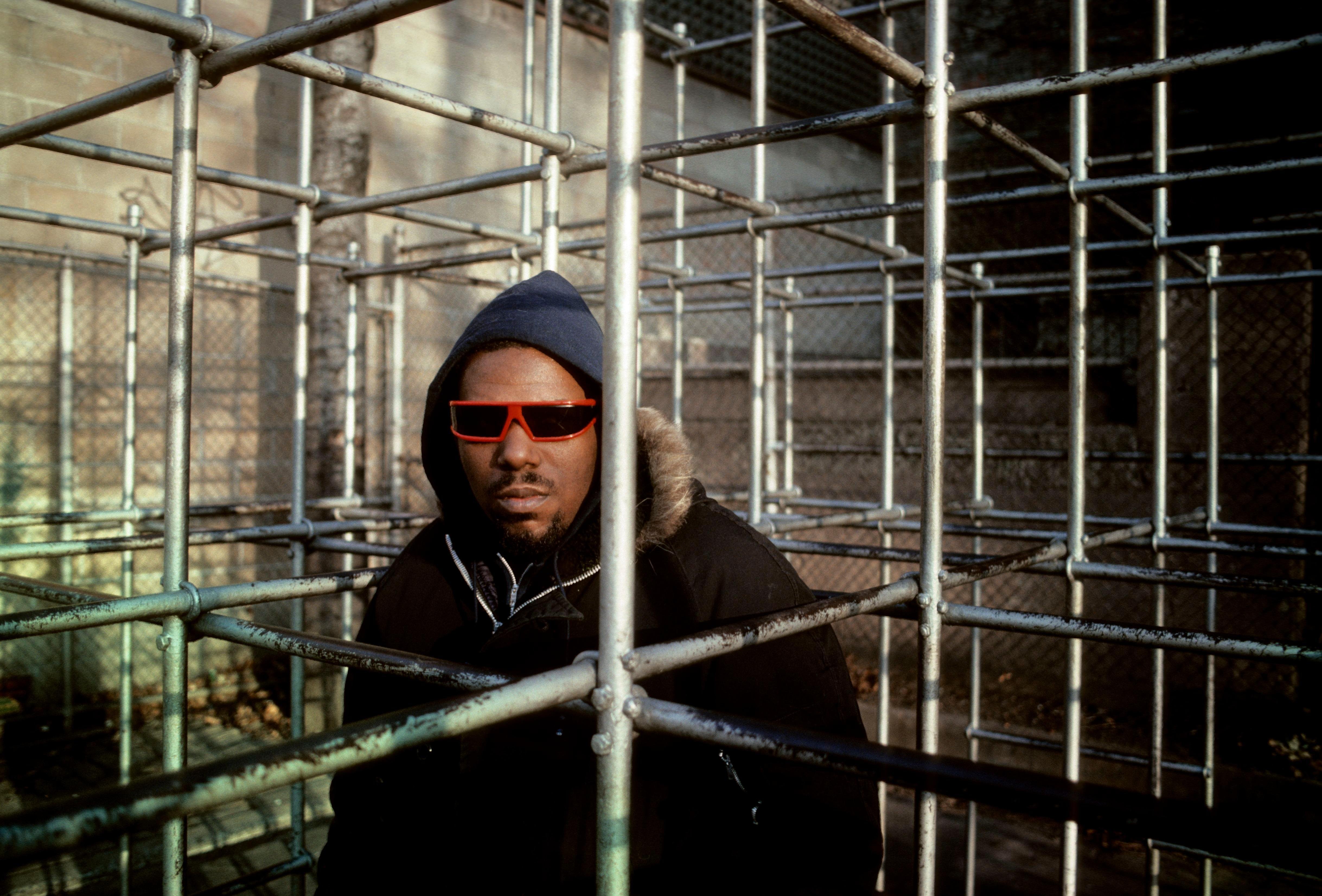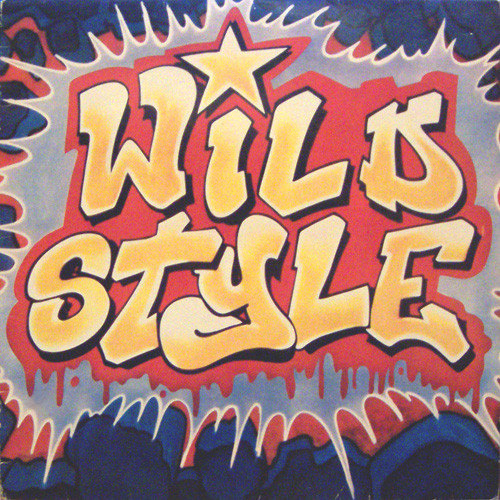New York Stories: Michael Holman
Michael Holman talks about throwing the historic Canal Zone party and the night he met artist Jean-Michel Basquiat, his future partner in the experimental noise band Gray.

Michael Holman played a key behind-the-scenes role in the explosion of New York City’s hip hop culture in the late ’70s and early ’80s. Among his accomplishments, Holman introduced Malcolm McLaren to rap music; was the first writer to use the term “hip hop” in print while at The East Village Eye; and promoted shows by artists like Afrika Bambaataa, Grand Wizard Theodore and DJ Kool Herc at the East Village club Negril. Before all that, however, Holman brought uptown graffiti writers and the downtown art scene together for the first time.
I was a Wall Street banker when I first came to New York. When I tell people that, their mouths drop. It’s hilarious, I know, but the first important job I got was as a junior credit analyst at Chemical Bank. [I was] ready to rise up the ranks because I graduated from the University of San Francisco with a degree in economics, so it was kind of a normal thing to do. I was there for a year, and on the weekends I was smoking pot with my friends.
I was a Wall Street banker when I first came to New York. When I tell people that, their mouths drop.
[During that time] I helped create the Canal Zone party, which brought the downtown and uptown artists together for the first time; [it was] a massive, historic party – and the first time I met Jean-Michel Basquiat – created by myself, Stan Peskett and Fab 5 Freddy. Stan Peskett I knew from San Francisco. He was friends with The Tubes, and The Tubes were a band that I was in – that was my baptism into show business. When I came to New York, Peskett was like the only person I really knew. So, I’m working at Chemical Bank and on the weekends I’m hanging out with him and smoking pot and helping him with his installations that he’s doing for Fiorucci and Canal Jeans and things like that.
One day I’m reading in The Village Voice a little article about the Fab Five graffiti group which was made up of Lee Quiñones, Slave, Doc, Mono, Slug and Fab 5 Freddy, and what they were offering in this little article was, “We’ll come to your home or place of business and do giant graffiti burners for a price.” That was the little blurb that they had; it was really funny, and I called them up and invited them over. Now Stan and Freddy and I are hanging out, talking about cool ideas, talking about what [Freddy] was into, which was this whole urban uptown hip hop thing – they were from Brooklyn mostly but I’m talking about Harlem and the Bronx – and so he’s hipping us to that world and we’re hipping him to our world and back and forth. We thought, “Why don’t we put on a party and invite all of the Fab Five crew to do giant burners and invite the downtown artist world so they can see what this is upfront and meet these guys – so that these artists from two different worlds, two different walks of life, can meet each other?” And so we did.

[Canal Zone] happened on April 29, 1979, in a loft building on the north side of Canal Street. [It was at] Canal and Greenwich, about two blocks west of the river; it wasn’t too far off the West Side Highway. The Fab Five crew did these giant graffiti burners on giant sheets of clear plastic, which was a kind of novel thing to do, and we invited the whole downtown scene and it was an amazing party.
Jean-Michel Basquiat had heard about this – he didn’t know any of us and none of us knew him, but we had heard of him because we had all seen the SAMO graffiti tags everywhere that he was doing with Al Diaz. Jean shows up early at the party, at the beginning before it really got started, told us who he was, and demanded to have participation as an artist in this, so we were like, “Yeah, sure.” That was the nature of those days. Somebody shows up with a shaved mohawk hairdo, a black guy looking so weird and different and avant-garde and says, “I want to be down too. I want to do something too!” The nature of that time was like, “Okay, sure, what do you want to do?” And so we got him a big nine-foot-wide roll of photo-grade paper, and he did a piece that said “Which of the following is omniprznt? A. Lee Harvey Oswald, B. Coca-Cola Logo, C. General Melonry, D. SAMO ©.”
[Meanwhile] I was doing all these interviews on video as Word Man. I’m interviewing Lee Quiñones and I’m interviewing this person and that person and then I interview Jean. I was kind of doing this goofy thing where I would ask people questions and then pull the microphone away before they could answer and then ask another question. I don’t even know why I was doing it. I was just being a dick, being a California kid not knowing how to be cool in New York. So I’m interviewing Jean and I’m doing the same thing and he’s excited because he’s never been on video camera being interviewed.
He was so far ahead of everyone; he was like five years younger than me, maybe 19 at the time, but he was 50 years older than me in terms of sophistication and understanding and making it as an artist. He was 50 years in front of everybody. And he knew, “I have to be at this party, I have to be videotaped, I have to be there.” And it panned out. It became part of his legacy, part of the fodder that built up his life story and career. I went up to him off camera and apologized, and he said, “No, that’s okay. You wanna start a band?” And I was like, “Sure.” I was off the hook – I was given this second chance to be cool again.

In the beginning of Gray, it was myself, Jean, an old high-school buddy of Jean’s named Shannon Dawson (who would later go on to create Konk) and then Wayne Clifford. We played this angry, blaring, loud, confrontational music. Some- times it was kind of mellow too, but it was very minimal, and I thought it was really good. It was like nothing anybody else did. Shannon played trumpet, Wayne played a keyboard, I played some drums and Jean played either clarinet or this Wasp synthesizer that I got him. Shannon [eventually] left the band because his horn playing really wasn’t fitting – it was forcing us into a groove that wasn’t allowing us to really experiment and explore, so we kind of kicked him out of the band, I hate to say, and then we brought in Nick Taylor, who played guitar.
[Jean would] play the Wasp synthesizer in such a way that... I have that same synthesizer and I cannot figure out how he got these sounds, just brilliant sounds.
Our attitude was like, “Let’s embrace the idea that we don’t know how to play our instruments and let’s only have people in the band who don’t know how to play instruments. Let’s approach the instruments in a new way. Let’s play them as if we were aliens from another world and we had no idea how the instrument was meant to be played, but we knew beautiful music and sound when we heard it.” We were completely turning the meaning of the instrument on its head and finding new ways to create unexpected sounds from the instruments, and that became the real cornerstone of our music. Sometimes we’d play our instruments in a conventional way, sometimes we wouldn’t. Jean started to play the electric guitar with a little file, on the floor, with the strings completely loose; he’d be pulling this metal file across the guitar strings and it would be making these plink-plunk-plink-plink-plunking sounds. [He would also] play the Wasp synthesizer in such a way that... I have that same synthesizer and I cannot figure out how he got these sounds, just brilliant sounds.
“Ignorant” was a term that we used back then that kind of captured who we were. A carelessly done or casually created work of art or sound or music that should not have worked but [actually] worked brilliantly – that was our definition of ignorant. So like a Godard film would be, “Oh man that is so ignorant,” or a piece of music or sound you made or the way you were dressed or painting or whatever. The greatest compliment you could give it was ignorant. It was something that shouldn’t work, [that] should be horrible but is brilliant, and that was our favorite aesthetic. It was our aesthetic: ignorance.
If we had stayed together at this critical juncture in ’81, we probably would have released music. But here’s what happened: Jean blew up as a painter. He did that PS1 show and his career just exploded. He was like, “I’m not going to be a famous painter who’s in a band.” That [would have been] okay [for an] unknown in the early days, in the late ’70s, but by ’81 or ’82, for Jean to have blown up the way he was going to, he had to design his career correctly. He had to be very calculating, and one of the calculations was that he had to leave the band, and it kind of spread us to the far corners. I got heavy into film, Nick got heavy into DJing, Wayne got heavy into painting, so we kind of all went our different ways. But we would have released music if we had stayed together a little longer.
As told to Mike Rubin.
A version of this article appeared in The Daily Note, a free daily newspaper distributed in New York during the 2013 Red Bull Music Academy.

